Active 1958 – present Color Blue, Gold | Colors Blue, Gold | |
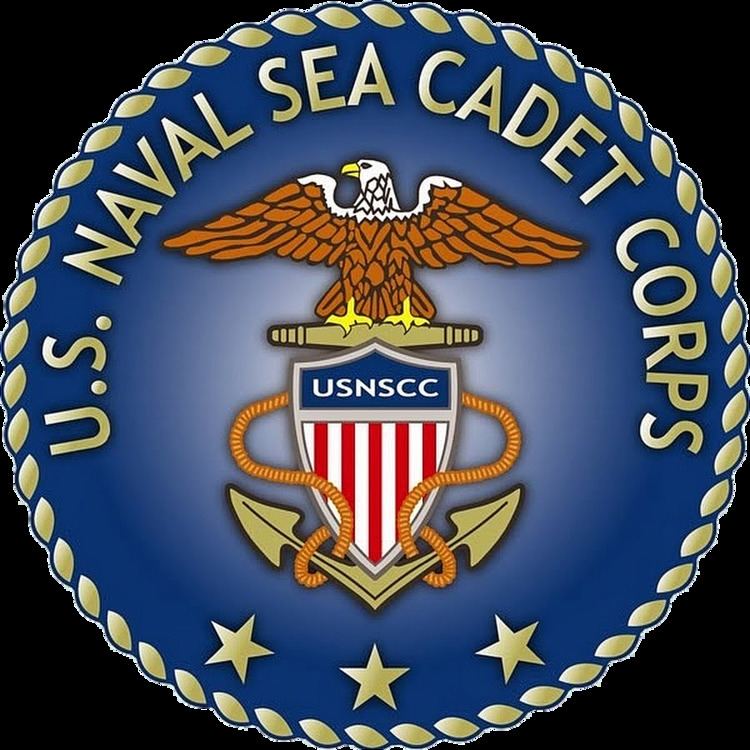 | ||
Country United States of America Size 388 units and 12,002 members (2,871 Officers, 9,131 Cadets) Anniversaries September 10, 1962 (federal incorporation) Headquarters Arlington, Virginia, United States Motto "Honor, Courage, Commitment!" Similar Veterans of Foreign Wars, American Legion, California Cadet Corps, Navy‑Marine Corps Relief So Profiles | ||
The United States Naval Sea Cadet Corps (USNSCC or NSCC) is a congressionally-chartered, U.S. Navy-based organization that serves to teach individuals about the sea-going military services, U.S. naval operations and training, community service, citizenship, and an understanding of discipline and teamwork. The USNSCC is composed of two programs – the senior program for cadets age 13 through the age of 18, or the Navy League Cadet Corps (NLCC), which is for cadets ages 10 through 13.
Contents
- History
- Organization
- Activities
- Uniform
- Ranks and rates
- Headquarters
- Administration
- USNSCS Grayfox TWR 825
- References
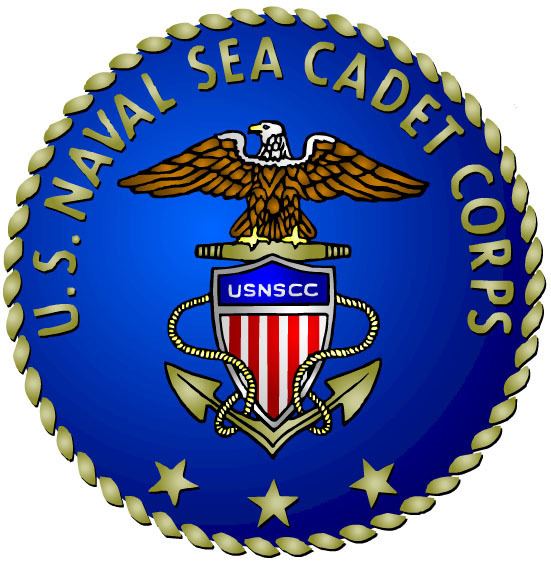
History
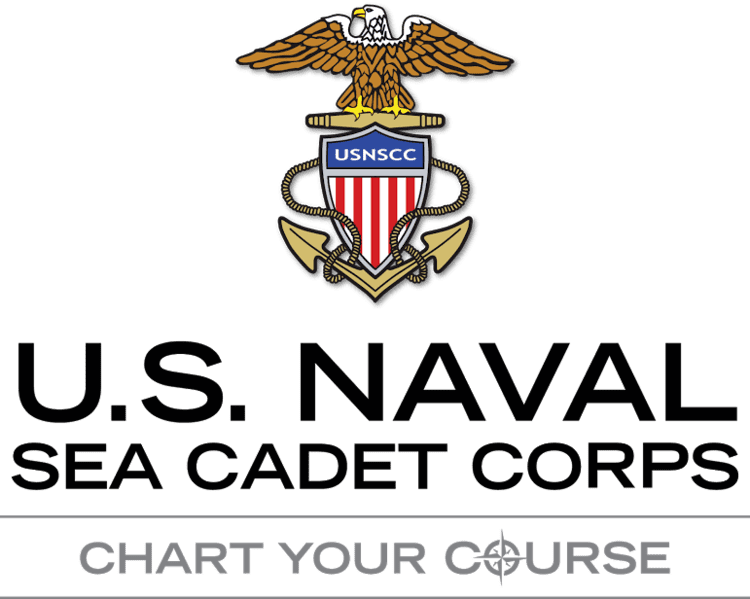
The NSCC was founded in 1958 by the Navy League of the United States at the request of the Department of the Navy. In 1962, the USNSCC was chartered under Title 36 of the United States Code as a non-profit youth organization with an emphasis towards the sea-going services of the United States. The law was amended in 1974 to allow female participation in the USNSCC.
In 2000, the U.S. Congress stated that the NSCC and related programs "provide significant benefits for the Armed Forces, including significant public relations benefits." Although under no service obligation, a sizeable percentage of cadets later enlist in the military. Members who obtain the grade E-3 or Seaman/Airman may receive an advanced paygrade of E-3 if they join the Navy or Coast Guard before they turn 24 years old, and E-2 in the Marine Corps or other services, due to the training they receive. Former Sea Cadets also represent a percentage of students at the five federal service academies.
Organization

The Naval Sea Cadet Corps is officially supported by the Navy League of the United States, and is endorsed by the United States Navy, United States Marine Corps, and United States Coast Guard. The United States Coast Guard, through COMDTINST 5728.2C, USCG Public Affairs Manual, has designated the USNSCC as the Coast Guard's primary youth program, rather than a JROTC.
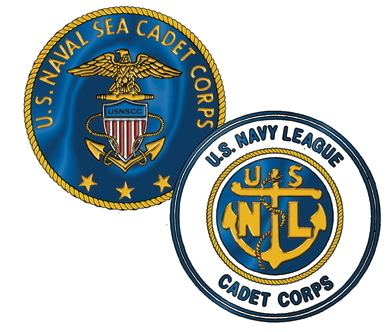
The national headquarters (NHQ) of the NSCC is located in Arlington, Virginia. Captain Paul Zambernardi, USN (Ret.) is the Executive Director, the "Commander-in-Chief" of the USNSCC. There are six field areas in all. Each field is headed by an NHQ Representative, who is usually the grade of a Navy captain. Each field area may be further divided into regions, which are headed by a Senior Regional Director, who is an NSCC lieutenant commander (LCDR). Each region can have sub-regions, depending on the size of the area and number of units in that region. Each sub-region is headed by a Regional Director (RD), who is also an NSCC LCDR. Each RD will report to the Senior RD for any matters regarding the region and/or sub-regions themselves. RDs are also responsible to the NSCC NHQ Representative for matters regarding Petty Officer Exams, PO1 and CPO advancements, NSCC officer matters, and anything else that would be of importance to the NHQ Representative or to the Executive Director. Each sub-region may be composed of anywhere between two and ten units. For example, the Pacific Southwest Field Area is composed of Region 11 (covering Southern California and the Las Vegas area) and Region 12 (covering Northern California, and in Nevada, those areas north of Las Vegas). Region 11 itself is divided into 8 sub-regions, each headed by one Regional Director and their regional staff.
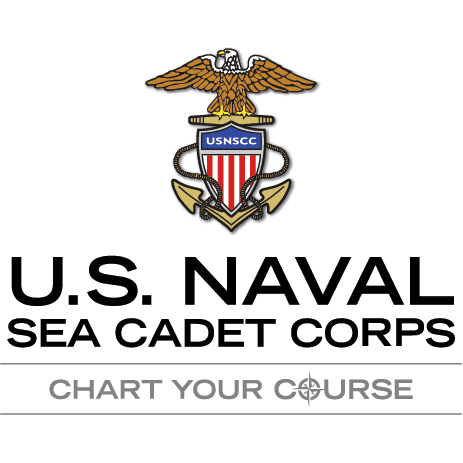
Each unit is required to have a complement of at least twenty-five cadets. They must be physically fit, have no criminal record, and have a good academic standard to become members. Each unit has a Commanding Officer and Executive Officer, and depending on the number of adult volunteers, may have other billets which cover different areas important to the operation of that unit. Some units have far more or far less than the required minimum, due to a vast array of recruiting issues. All units must have the minimum number of personnel in order to be commissioned into the NSCC.
Adult leaders are volunteers with myriad experience ranging from active/reserve/retired military personnel to civilian parents of cadets. Adult volunteers must be 18 years and older. NSCC officers, instructors, and midshipmen all must go through a thorough application process—including a background check—before they can be accepted as adult volunteers. High school graduates aged 18, up through adults aged 21 may serve as Midshipmen (MIDN). Midshipmen are technically NSCC officers, and are mostly former cadets, but can be ROTC, service academy, or other personnel with some type of experience relevant to the function of the NSCC and NLCC. Adults aged 21 years and older can serve as NSCC instructors, Warrant Officers, or officers (although Warrant Officer grade is reserved to military personnel with specific qualifications). Cadets who are 18 years old can elect to remain a Sea Cadet through high school graduation and until 30 September of the year of their graduation.
The United States Navy, United States Navy League, and the United States Coast Guard all support the NSCC by providing such resources as uniform assistance, use of military facilities, and assisting with training courses. Most support, however, comes from the volunteers and parents of the NSCC program. Most of the NSCC's funding has come from the enrollment fees of its cadets and officers, the Navy League of the United States, private sources, and through appropriations from the DOD's annual budget. In recent years, the NSCC has lobbied for, and obtained, through congressional support, between $1–2 million a year to offset the rising costs of supporting and running NSCC trainings.
Activities
Each new Sea Cadet must attend NSCC recruit training, which serves to introduce each "recruit" to the standards and routine involved in the life of a Sea Cadet. Military drill, customs and courtesies, physical fitness training, and other courses related to the sea-going services, are part of the demanding schedule of recruit training.
After graduating from NSCC recruit training, Sea Cadets have the opportunity to attend Advanced Training in many different locations and in many different fields, depending on their personal interests. Cadets must attend at least one Advanced Training each year in order to advance in rank. These training opportunities usually occur during the summer and winter breaks, but also may occur anytime throughout the year.
Advanced Training is held primarily at Navy, Coast Guard, and Marine installations, and can range anywhere from five days up to three weeks in length. The training courses are coordinated and staffed by NSCC Officers and Instructors, and may have outside instructors from all branches of the Armed Forces, who are mainly made up of Active and Reserve Navy, Marine, and Coast Guard personnel.
These training activities include, but are not limited to:
Each of the NSCC and NLCC's 380 units perform drills all around the United States during the school year. Some units have a weeknight drill of 2 – 3 hours, or drill for an entire day over the weekend twice a month, while others drill once a month for an entire weekend. Each unit's drill schedule is set by the unit Commanding Officer and depends on the location of the unit and availability of both adult staff and cadets. During the school year, nearby units often come together to participate in weekend trainings, including Field Training Exercises, Small Arms Training, Shipboard Training, and Regional Flagship Competitions. To find a local unit visit Fall in and Join
The USNSCC owns a ship, the USNSCS Grayfox, homeported in Port Huron, Michigan.
The USNSCC also sponsors an International Exchange Program with other Sea Cadet programs around the world: exchange countries include the United Kingdom, Canada, Australia, the Netherlands, Korea, Japan, Sweden, Hong Kong, Russia, and Bermuda.
Uniform
The Navy allows the NSCC and NLCC to wear the uniforms of the United States Navy, only modified with a distinguishing crest and shoulder insignia (Dress Blues). U.S. Navy Uniform Regulations are adhered to by both the NSCC and NLCC. Officer rank insignia are the same as the Navy's. Sea Cadet rate insignia are slightly different in design; the colors are changed to yellow, are in the form of chevrons (V-shaped), and are worn on the right sleeve for the dress uniform. The ranks of E-2 and E-3 have the corresponding number of chevrons (downward facing) and the ranks E-4 through E-6 have the rate of BM (Boatswain's Mate). Chief Petty Officer uniforms are similar to those of the United States Navy, with a different cover device. It is different on the Navy Working Uniform (NWU) and Battle Dress Uniform (BDU), where the rate insignia is worn on the cadet's collar and is slightly different from the US Navy collar devices. Additionally, a U.S. Naval Sea Cadet Corps flash must be sewn on the right pocket of the NWU uniform and on the shoulders of the BDU uniform.
Ranks and rates
Sea Cadet rates follow the same path as of the United States Navy and United States Coast Guard enlisted rates from E-1 (Seaman Recruit) through E-7 (chief petty officer) (see United States Navy enlisted rates). An enlisted sailor's rate is similar conceptually to a naval officer's rank. Only officers carry the term "rank" in the Navy. All cadets have to take the Navy correspondence courses and pass Navy examinations to advance in rate. They must have a minimum time served in each rate before moving to the next higher rate. All new Sea Cadets enter the NSCC as an E-1 (Seaman Recruit); detailed requirements for advancement are outlined below.
Instructors are adult volunteers seeking appointment into the NSCC Officer Corps. Enrolled Instructors wear a modified NSCC officer's uniform without shoulder boards or gold chin-straps on their hat. Everyone who wishes to become an Ensign in the Officer's Corps must serve in a probationary status for one year prior to approval for appointment. This time as an Instructor serves as the probationary period and allows time for the instructor to complete the NSCC Officer/Midshipman Study Guide. Depending on billet needs and performance as an Instructor, all Instructors may apply for jump promotions past Ensign. All Instructors, however, must serve for 1 year and complete the Officer/Midshipman Study Guide.
Warrant Officers are adult leaders who have received direct appointments into the NSCC Officer Corps. Warrant Officers wear a modified navy warrant officer's (W-2) uniform appropriately marked with the NSCC Insignia. Warrant Officers normally serve a specific function or head a department within the unit and remain in the grade of Warrant Officer, however, may become an Ensign in the normal path of advancement after one year of service if they choose to do so. Candidates for Warrant Officer do not have to complete the Officer/Midshipman Study Guide prior to appointment, however must meet the following additional requirements: – Obtained E-6 or above in any branch of the Armed Forces. – Have a special skill or use in the unit's operation.
Officers must be at least age 21 (18 in the case of MIDN), obtain a waiver if older than 65, be a US citizen, and have successful completion of a background check. Officers must also meet height and weight requirements to wear the uniform, and military personnel (active and retired) are allowed to wear their military uniforms (see U.S. Navy officer rank insignia). Officers may either be civilians or military personnel (active, reserve or retired) who are knowledgeable of youth and interested in their training. Instructors are also recruited from active Reserve military commands and leaders within the community. The NSCC does not require specific education or professional qualifications, but applicants with nautical/military experience are desired. NSCC officers are authorized to wear Navy officer uniforms (modified by the NSCC insignia). All NSCC officers are appointed by NSCC National Headquarters. All volunteers who wish to enter the Officer Corps must serve at least one year as an Instructor, Midshipman, or Warrant Officer before an appointment to Ensign in the Officer Corps can be made.
Important clarification about the correlation of rank The following except is taken directly from NSCC Regulations, Chapter Seven, The Naval Sea Cadet Corps Officer, Section 1: The NSCC Officer Corps: There is no correlation between rank in the military and rank in the NSCC. Initial appointment in the NSCC may not, therefore, be in the equivalent rank held in the military. According to the Baton Rouge Division of the USN Sea Cadet website: NSCC officer rank is entirely honorary and does not have any relation to or authority and entitlements of actual military rank. Current active duty, reserve, retired, or former active duty military wear the uniform and rank of their service and not the Sea Cadet Officer uniform.
Headquarters
Policy and guidance for the administration and operation of the Cadet Corps programs is established by a National Board of Directors. The National Vice President of the Navy League for Youth Programs serves concurrently as the National Chairman of the NSCC National Board, and the Vice Chairman of the NSCC National Board serves as the National President. Day-to-day administration of the programs is accomplished by a full-time Executive Director and small staff located in Arlington, Virginia.
Administration
Mr. John Alger
National Chairman
Captain Paul Zambernardi, USN (Ret.)
Executive Director
USNSCS Grayfox (TWR-825)
The USNSCS Grayfox (TWR-825) is currently the largest ship owned by the United States Naval Sea Cadet Corps. She is homeported in Port Huron, Michigan and is used by the USNSCC for shipboard training. The USNSCS prefix stands for "United States Naval Sea Cadet Ship."
